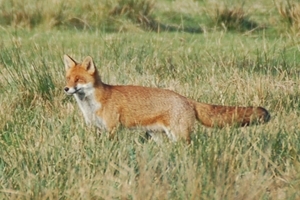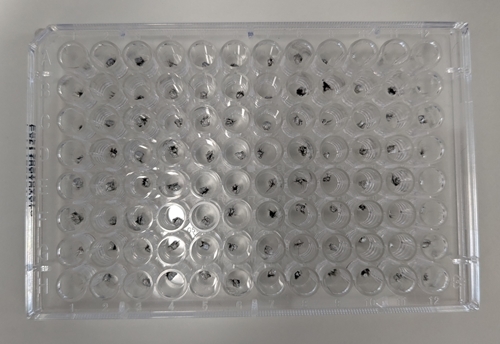By Nathan Williams, PhD student, GWCT Predation Management Research Team
“A specialist is a man who knows more and more about less and less.”
- William J Mayo
 Just like my study organism, I am a generalist. In the two years since my PhD started in September 2021, I have used many of the tools available to the modern ecologist as I attempt to peel back the curtain on red fox population dynamics in central southern England, and the associated consequences for their threatened prey species.
Just like my study organism, I am a generalist. In the two years since my PhD started in September 2021, I have used many of the tools available to the modern ecologist as I attempt to peel back the curtain on red fox population dynamics in central southern England, and the associated consequences for their threatened prey species.
Understanding which major food resources support the large numbers of foxes found throughout the region is one of the main focuses of my project, and so far analysis of stomach contents has allowed us to quantify red fox diets in the New Forest National Park. Nevertheless, I am once again raiding the ecologist’s toolbox to try to investigate fox diets across the whole region, this time reaching for stable isotope analysis…
What are stable isotopes?
Stable isotopes are naturally occurring forms of the same element that have different molecular weights. For example, carbon has two stable isotopes (12C and 13C), and so does nitrogen (14N and 15N). You might have heard of radiocarbon dating (using 14C radioisotopes), which can be used to determine the age of things like historical artefacts, but stable isotope analysis is slightly different. Stable isotopes do not decay over time and the abundance of them varies, so different groups of organisms typically have their own unique, identifiable stable isotope signature that we can study.
‘You are what you eat’
Isotopes from the food and water consumed by an organism make their way into the animal’s tissues over time. Because of this, the ratio of stable isotopes present in an animal’s tissues reflects its diet over a certain timespan; for example, the isotope ratio of an organism’s red blood cells may represent its diet over the past month, whereas that of its bone collagen may represent its average diet over the course of its entire life. A key advantage of this type of analysis over more conventional methods is that it can help us study average diets over longer time frames.
The GWCT predation management team has previously conducted dietary research on red foxes in places like the Avon Valley and the New Forest using conventional methods, such as stomach and scat content analysis, direct observations of feeding behaviour, and camera trap images.
However, a common factor in all these methods is that they only inform us about the most recent meal a fox has consumed and are potentially more susceptible to observer bias, which is why we are keen to explore the greater power of stable isotope analysis.
Red foxes are, of course, notoriously generalist in their dietary habits. Therefore, it is necessary to take tissue samples from many red foxes, as well as from a broad range of their potential prey, including birds, small mammals, large mammals, lagomorphs, invertebrates, fruit, and anthropogenic food. Many painstaking lab hours must be dedicated to preparing the hundreds of samples included in the analysis.
In the case of soft tissue samples, a multi-day freeze-drying process is used to dehydrate each sample before they are ground to a fine powder. A tiny quantity of each sample is taken for analysis (like in the picture below) before stable isotope measurements are taken on something called a mass spectrometer, allowing us to determine the proportion of different food items present.

Only a small number of laboratories across the country boast the level of expertise and equipment needed for this kind of analysis. Therefore, to carry out the final stage of analysis, I will spend a week at the University of Glasgow in September, with the whole project being funded by a grant awarded by the Natural Environment Research Council Stable Isotope Facility.
The payoff in all this will be a novel insight into the spatial dietary patterns of red foxes over a large area in a varied part of Great Britain. Timely answers to important and contentious issues will be provided, such as the overall contribution of gamebirds and anthropogenic food to red fox diet. We anticipate our findings from this exciting new study to be published at some point during 2024.